What are the symptoms of diabetes?
What are the symptoms of diabetes? 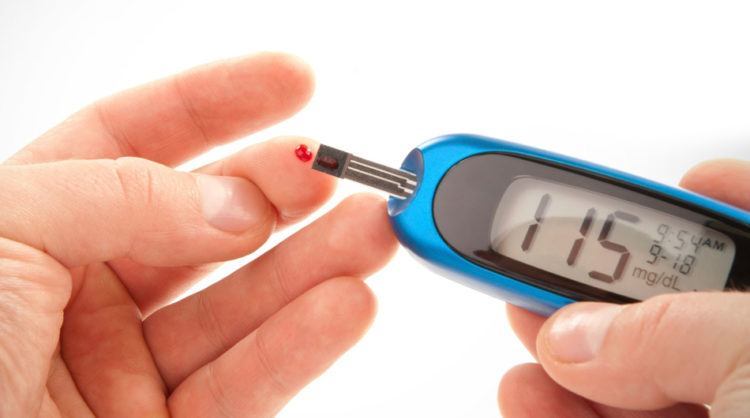
The incidence of diabetes is now really very high, generally more than fifty years of age, the physical examination of ten inside at least one of the three high (high blood fat, high blood pressure, high blood sugar), and some even three high all accounted for. The occurrence of three high and modern fast-paced life and people's eating habits have a great relationship, the following figure is a diabetic patient appeared lower extremity vascular plaque image: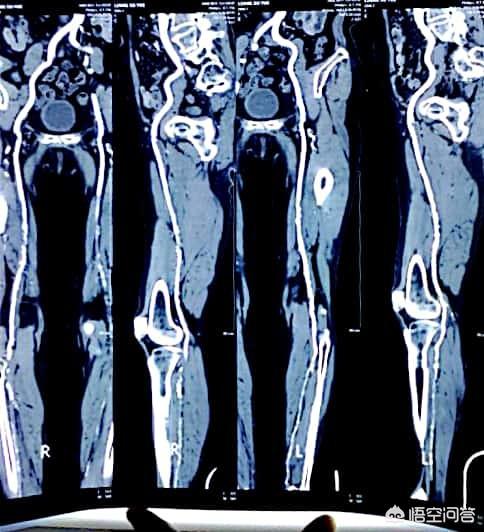
The main symptom of diabetes is the well-known "three more and one less".The "three more" is eating more, drinking more, and urinating more; and the "one less" is weight loss, or wasting away. The reason why these symptoms occur has a lot to do with the causes of diabetes. The main indicator of diabetes is elevated blood glucose, higher than normal, and the main reason for this situation is that diabetic patients have abnormal glucose metabolism, whether it is type 1 or type 2 diabetes, are abnormal glucose metabolism, resulting in elevated blood glucose, as well as the symptoms of the three more and one less.
Normally, sugar is the main functional substance, which is why our staple food is all starchy food, whereas diabetics cannot utilize sugar for energy supply, so they opt for proteins as well as fats for energy supply. Protein for energy production produces water, or urine, and a large amount of urine is required in order for the unavailable sugar to be excreted from the urine, thus leading to an increase in the amount of urine.
Protein of the same mass can provide less energy than glucose, so to maintain the same amount of energy, you need more protein, and the main source of protein is food, which is why you eat more and get hungry faster. This is the reason why you eat more and get hungry faster. The reason why you lose weight is because fat is used to provide energy. If you have symptoms similar to the "three more and one less", you must consult a doctor in time. Diabetic patients usually diet attention, reduce the intake of sugar, more protein, usually, especially after meals, appropriate exercise, reduce the impact of diet on blood sugar.
There are many classic symptoms of diabetes.
1, an unusually good appetite, eat soon and feel hungry, but increasingly lose weight. In fact, this is the typical "three more and one less" symptoms of diabetes, i.e., drinking more, urinating more, eating more and weighing less.
2. Sudden loss of vision, leading to particularly blurred vision. Early stages of diabetes are reversible because the accumulation of glucose in the eye tends to cause it to change shape, preventing the eye from focusing. It needs to be differentiated from diabetic retinopathy.
3. Numbness and inflexibility of the hands and feet and often accompanied by bouts of pain. Diabetics regularly experience numbness and coldness in the hands and feet, so when a part of the body feels numb and swollen, especially in the elderly, it must be checked promptly.
4, often sleepy, how to sleep during the day is not enough, resulting in mental trance. Diabetic patients daytime sleepiness hours is twice as much as normal people. This situation is most typical in the elderly diabetic patients, because the brain will be more sensitive to oxygen, a prolonged lack of oxygen will cause yawning, followed by a lack of concentration, which leads to want to doze off.
5, diabetes can lead to human endocrine disorders, decreased immune function, skin resistance decreased, self-healing ability to weaken prone to recurring skin problems, and elevated levels of sugar in the urinary tract and vagina will provide a breeding ground for pathogenic bacteria infection.
6, manifested as temperamental, because the body intake of food is not fully decomposed, so that the body can not meet the needs of the body, there may be mood depression and other symptoms, and tension, stress and other bad mood is also one of the triggering factors of diabetes, so you should maintain an optimistic state of mind.
Instructor: Yingze Zhang, Deputy Chief Physician, Department of Endocrinology, Baoding First Hospital of Traditional Chinese Medicine, Baoding, China.
He specializes in the treatment of diabetes mellitus and its complications, thyroid disorders and other endocrine metabolic disorders, and miscellaneous diseases in Chinese medicine through the combination of Chinese and Western medicine.
If you find this article useful, please feel free to like or recommend it to your friends and follow [Medlink Media].
Thank you.
I'll start with what diabetes is.
Diabetes mellitus is a metabolic disease characterized by chronic elevation of plasma glucose due to genetic, autoimmune, and environmental causes.
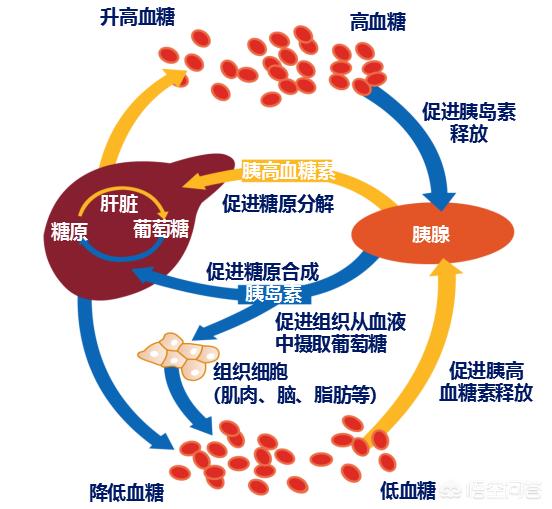
Due to the dysfunction of insulin secretion or action in this disease, there is an imbalance of the three major nutrients, as well as water electrolytes and acid-base imbalance.
Diabetes mellitus is categorized according to its cause as follows.
I. Type 1 diabetes (insufficient insulin secretion due to B-cell destruction)
Type 2 diabetes (insufficient insulin secretion with insulin resistance)
III. Other special types of diabetes
Including: diabetes caused by infections, drugs or chemicals, diabetes caused by genetic mutations, gestational diabetes, etc.
Diabetes should be suspected when any of the following signs are present.
Polyuria due to osmotic diuresis after elevated blood glucose
Followed by thirst leading to excessive drinking
The impaired utilization of glucose by our peripheral tissues leads to an increase in protein-fat catabolism and the gradual onset of lethargy and fatigue, and in order to compensate for the loss of glucose through osmosis and to maintain the body's functioning, we often feel hungry and overeat.
From the above it can be seen that the clinical manifestations of diabetes are often described as three more and one fewer
It boils down to this.
polyuria
drink more
take a lot of food
weight loss
In addition, some patients may experience itching of the skin, especially of the vulva.
Elevated blood glucose can lead to increased intraocular pressure and blurred vision.
In practice, many patients often have no symptoms, but are found to have elevated blood glucose during a physical examination or during routine laboratory tests for various other diseases.
Therefore, prevention is the key to this disease.
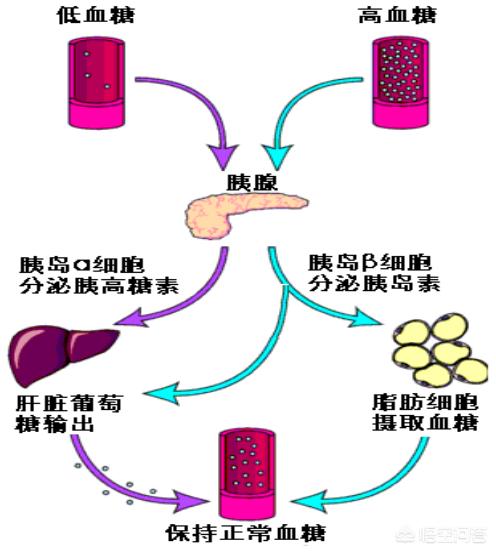
(Images from the Internet, not for commercial use! (The content of this article is for reference only, not as a basis for diagnosis and medication, and can not replace the diagnosis and treatment of doctors and other medical personnel and advice, if you are not feeling well, please seek medical attention in a timely manner.)
I. Eyes are easily fatigued,visionrapid decline
Eyes get tired easily and vision decreases rapidly. When you feel that your eyes can't see well, get tired easily, get dark and hazy in front of your eyes when you stand up, narrow your field of vision, and your eyes suddenly become presbyopic or change from farsightedness to nearsightedness, etc., you should go to the hospital for an eye examination immediately.
If a little attention is not paid, the above symptoms will further cause corresponding visual impairment, retinal hemorrhage, cataract, visual adjustment disorder and other diseases. This is one of the sequelae of diabetes.
II. Hunger and polyphagia
When you find that people who usually do not like sweets start to eat a lot of sweets without choice, or often feel hungry and appetite increases, but after eating still hungry as usual, this should cause alarm.
This is because the sugar in a diabetic's body is excreted outward through urine, and when too much is excreted, the body does not absorb enough calories.
This is the reason why diabetics are hungry and overeat. So when there are symptoms mentioned above, this needs to be checked in the hospital.
3, Hand legsparalysistremble
Diabetic patients will have symptoms such as persistent hand and foot paralysis, shaking hands and feet, finger immobility and paroxysmal pain sensation, severe neuroinflammatory foot pain, lower limb paralysis, lower back pain, not wanting to walk, calf cramps at night in their sleep, oculomotor nerve paralysis, and vision suffered, etc. They have to be examined in the hospital as soon as it is detected and should not be delayed. Once delayed, it may develop into more serious sequelae, such as stroke.
IV. Fatigue, high blood pressure, white urine
If you feel tired and weak, even without strenuous exercise, your body often feels fatigued for no reason, your legs feel weak, your knees feel weak, especially when going up and down the stairs or when you find that your blood pressure is elevated, your urine turns white, or you smell a sweet and sour odor, it's time to go to the hospital for a checkup as soon as possible.
It is difficult for diabetic patients to feel the symptoms in the early stage, but when they do, the disease has already developed to a very serious level. Therefore, the most important preventive measure is to go to the hospital for regular health checkups. The earlier the disease is detected, the easier it will be to control the blood sugar level.
V. Thirst and excessive urination
Drinking and urinating more is a typical symptom of people with pre-diabetes. When it is noticed that a person who is not a water drinker suddenly starts to consume a lot of water or drink a lot of water, and the frequency of urination and the amount of urine also starts to increase, people should start paying attention.
This is because it is the easiest way to detect diabetes. Especially in patients who wake up in their sleep to drink water due to extreme thirst, it may indicate that the patient's condition has begun to deteriorate at this point.
The daily urine output of a normal person is 1 - 1.5 liters, but as diabetic patients urinate more frequently due to the increased frequency of urination, the daily urine output also increases, often reaching 2 - 4 liters, and even more in some patients. When these symptoms are present, it is important to go to the hospital immediately.
VI. Weight loss
With the development of society, people are eating better and better, and middle-aged people are becoming obese day by day. However, when it is found that the weight drops rapidly without any reason, they should go to the hospital to check whether they have diabetes.
Diabetes mellitus is a syndrome of metabolic disorders caused by a combination of genetic and environmental factors, manifested by disorders in the metabolism of sugars, proteins, fats, as well as water and electrolytes. Diabetes mellitus is clinically categorized as type 1, and type 2. type 1 diabetes mellitus is an absolute deficiency in insulin secretion, and is mostly autoimmune related. The majority of diabetics have type 2 diabetes, which is a relative deficiency of insulin secretion and insulin resistance, and is closely related to metabolic syndrome and obesity.

What are the main main symptoms of diabetes?
Diabetes mellitus is mainly characterized by excessive urination, drinking, eating, and weight loss.
Many patients may not realize that they have diabetes, only when they show some complications and go to the hospital for examination. For example, urinary tract infections, blurred vision, palpitations and shortness of breath, and even serious conditions such as ketoacidosis.
Common Symptoms:The patient exhibits lethargy, loss of energy, and irritability. Itching of the body, in addition, may be manifested as visual impairment, often with numbness and pins and needles sensation in the hands and feet, and may be complicated by foot ulcers. Women may have menorrhagia and amenorrhea, while men are most commonly affected by impotence and loss of libido.
What are the signs that should alert you to diabetes?
First of all, when you often feel thirsty, and the body in a short period of time gradually lose weight, the frequency of urination as well as the amount of urine every day has a significant increase in the time should go to the hospital for a checkup. For those who are obese and have a family history of diabetes should also pay extra attention.
How is diabetes diagnosed clinically?
The diagnosis of diabetes is usually confirmed when the above symptoms of diabetes are present, together with a random measurement of blood glucose when one of the above is fulfilled: blood glucose ≥ 11.1 mmol/L, or fasting blood glucose ≥ 7.0 mmol/L (fasting means no calorie intake for at least 8 hours), or blood glucose ≥ 11.1 mmol/L after 2 h of glucose tolerance testing. The test usually needs to be repeated once and if the results are the same, the diagnosis of diabetes is made.
It is important to note that some people are normally diabetes-free but find high blood glucose during an occasional physical exam, which should be reviewed on another day rather than taken lightly and left alone.
Diabetes requires lifelong treatment, and the effectiveness of treatment depends on patient initiative and the severity of the disease. Therefore, diabetic patients should first have a correct understanding of the disease. Recognize the type of diabetes they have and the complications; correctly grasp the dietary treatment and adjustment skills; always monitor their own blood glucose levels and be able to adjust their diets and medications according to their blood glucose; and be able to recognize the prevention and timely treatment of hypoglycemia. As long as blood glucose can be controlled in the normal range, the risk of complications can be greatly reduced.
If you find this article useful, please share it with more people. Click on the top right corner to follow and I will share more health knowledge with you.
This is a good question, diabetes is a disease with a large population base, to share a figure from 2016, WHO released its first global diabetes report in 2016, showing that the number of adults with diabetes worldwide has tripled in nearly 40 years, with the majority living in developing countries. The report shows that the rate of adults with diabetes in China is close to 10%. 90% of them are type 2 diabetics, and the remaining 10% are type 1 diabetics with absolute insulin deficiency. Therefore, early detection and judgment of diabetes and timely intervention and treatment is very important medical common sense.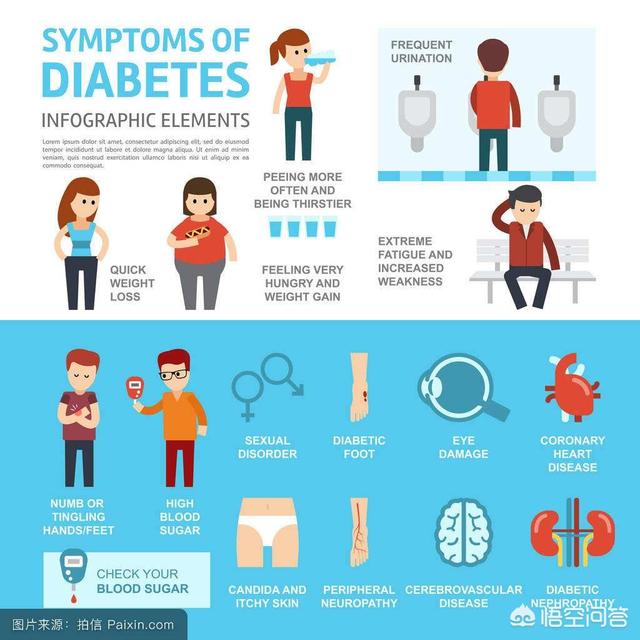
Pharmacist Li talk about health, click on the upper right red button "+ attention", more health science and technology to share with you!
Diabetes mellitus is a metabolic disorder with multiple etiologies and manifestations, characterized by imbalances in the metabolism of carbohydrates, fats, and proteins and chronic hyperglycemia due to defective insulin secretion and/or impaired insulin activity or both.
Clinical manifestations of diabetes
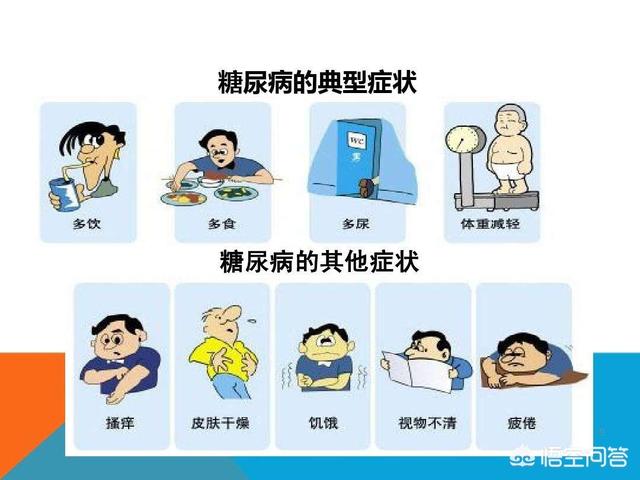
Many diabetic patients do not have obvious symptoms, some may have excessive drinking, excessive urination, excessive eating, emaciation and weight loss, fatigue and weakness, unclear food, and dry and itchy skin.
Characteristics of type I diabetes: it can develop at any age and is common before the age of 30; it starts sharply, and most of them have typical symptoms of three more and one less; blood glucose rises significantly, and ketosis often occurs repeatedly; the levels of insulin and C-peptide in the blood are very low, or even not monitored; the patients' pancreatic islet function is basically lost, and they need to take lifelong insulin replacement therapy. Late-onset autoimmune diabetes mellitus, the age of onset is usually 20 to 48 years old, the body is thin, prone to macrovascular lesions.
Type II diabetes mellitus characteristics: generally have family genetic history, insidious onset, slow, asymptomatic time up to several years to decades; most people are obese or overweight, good appetite, no difference between mental stamina and normal people, occasional fatigue and weakness, and individuals will be hypoglycemia; mostly found in the checkups, with the prolongation of the disease process, there can be chronic complications of diabetes mellitus.
To summarize, for type 2 diabetes, which is found in a large number of people, it is difficult to fully determine whether or not it is diabetes based on signs and symptoms alone, and then the basis for the diagnosis of diabetes is discussed below.
Diagnostic basis for diabetes mellitus
Briefly, for those with typical symptoms of diabetes (excessive drinking, eating, urination, and weight loss), blood glucose ≥11.1 mmol/L at any time or fasting blood glucose ≥7.0 mmol/L, or 2-hour blood glucose ≥11.1 after a 75-g glucose loadmmol/L, all are diagnosed as diabetes mellitus.
What is diabetes?
Diabetes, as the name suggests, is a disease in which there is sugar in the urine due to elevated blood sugar. However, not all diabetic patients actually have sugar in their urine, and sugar in the urine may not necessarily be diabetes; the key is whether the blood sugar is elevated to a certain level.
It can be said that diabetes is a chronic disease caused by a long-term combination of genetic and environmental factors, and that the main problems that occur are insufficient insulin secretion (not enough insulin to go around) and insulin resistance (poor action of insulin).
What are the symptoms of diabetes?
The main clinical manifestations of diabetes mellitus include polyuria, polydipsia, polyphagia, loss of strength and weight (commonly known as "three more and one less"), preprandial hypoglycemia, itchiness of the skin, susceptibility to skin infections, loss of vision, and chronic complications of diabetes mellitus such as numbness of the hands and feet, panic attacks, constipation, diarrhea, urinary retention and erectile dysfunction ("impotence"). impotence) and other manifestations of chronic complications of diabetes.
1. Three more and one less
My description of the "three more's and one less's" of diabetes is "more urination, more drinking, more eating, and loss of strength and weight." About two-thirds of diabetics have excessive urination and drinking, while only one-half have excessive eating. About half of the diabetic patients have the symptom of "eating more", which is manifested by an increase in the amount of meals than before, or significantly more than people of the same age, gender, and labor intensity, but still feel hungry.
Almost all patients have "one less", which is the loss of physical strength and weight. Almost all patients feel tired and weak in the early stage of the disease, especially the legs are not strong, and when they come back from work or go out for a little activity, they feel sleepy all over, and they can't wait to go to bed and lie down for a while.
Patients with type 1 diabetes, in particular, begin with significant wasting and weight loss of 10 to 20 pounds or more.
2. Low blood sugar
Some diabetic patients say that their earliest symptom is not "three more and one less", but the hunger before meals, sometimes cycling home from work, before reaching home, hungry and sweaty, must buy some food on the street, otherwise it will not reach home. When I arrive home, I have to open the refrigerator to find something to eat to fill my stomach, otherwise I will be covered with cold sweat and panic.
It is true that many patients have experienced this symptom, but some are more careful and meticulous and have detected diabetes from such clues, while most do not take it seriously and do not get it checked. The main cause of pre-meal hunger is sluggish insulin secretion, which is out of sync with the highs and lows of blood sugar.
Normal people blood insulin rise and fall and blood sugar almost synchronized, after eating something blood sugar went up, insulin secretion immediately increased, so that blood sugar back to the normal range; blood sugar fell, insulin secretion also fell immediately, so as not to cause hypoglycemia.
In the pre-diabetes (soon to get diabetes), or in the early stage of diabetes, the amount of insulin secretion is not significantly reduced, but the secretion began to become slow and out of sync with the blood glucose level, blood glucose rises after a meal, insulin secretion does not come out, resulting in blood glucose rises too high; the next meal before the blood glucose comes down, insulin secretion instead of the peak, which results in hypoglycemia, caused by preprandial hunger.
3. Skin infections
When diabetic patients are not well controlled, they are prone to skin infections, boils and sores, and when they have boils, they do not heal easily and often turn into pus. Normally, when the skin is injured, it is not easy to close, and after closing, the injured area will be left with a patch of pigmentation, especially on the front of the calf, which is always a dark patch. In serious cases, carbuncles may occur, with many boils growing together to form a deep and large pustule, which must be cut open to drain the pus.
The tendency of diabetic patients to develop boils and sores may be related to several factors:
(1) Metabolic disorders, poor general condition of the body, and poor resistance.
② The skin has vascular and neuropathy, poor blood supply, poor sensation, poor self-protection, easy to be injured, and poor skin recovery.
③ Elevated blood sugar provides a good medium for bacterial growth.
That's why it's important for diabetic patients to control their blood sugar well and protect their skin.
4. Vision loss
Diabetic patients have a high possibility of vision loss, many people are unable to see things, go to the ophthalmology department, and then from the ophthalmology department to the endocrinology department, which is often partially or completely lost the opportunity to treat, which is a very regrettable thing.
There are many common causes of vision loss in diabetic patients:
The first is blood sugar fluctuations.Some diabetic patients say that they can judge the rise and fall of blood sugar according to whether their vision is blurred or not, and that their blood sugar must be high when their vision is bad. It is precisely because blood sugar fluctuations can affect the regulation of the lens by changing the osmotic pressure outside the lens in the eye, causing difficulties in focusing the light in the eye, which in turn affects vision.
The second is cataracts.Older people are prone to age-related cataracts, and diabetic cataracts may occur in diabetic patients, then the chances of cataracts in older diabetic patients are significantly higher. Cataracts block the eyes like a white cloth and cause blurred vision.
The third is retinopathy.This includes hemorrhages in the bottom of the eye and retinal detachment, which can seriously affect vision.
Of course, sometimes vision loss in diabetic patients has nothing to do with the diabetes itself, but is the result of a disease of the eye itself.
Not all diabetics have symptoms
It is worth noting that not all diabetic patients have obvious symptoms, that is to say, no diabetic symptoms of people do not necessarily certainly not diabetic patients. Some people do not know anything about diabetes, although there are symptoms of diabetes but do not recognize, drink more food also thought that "can eat and drink body good", weight loss and that "money is difficult to buy old thin". These situations can easily lead to under-diagnosis, which may lead to a misunderstanding of the condition.
Overseas research found that some diabetes patients from the disease to the diagnosis of clear between, can be an interval of 7 to 10 years of time. In other words, many diabetic patients have been unknowingly suffering from diabetes for many years before they are clearly diagnosed, and this situation is especially likely to occur in patients with type 2 diabetes, which is particularly alarming.
Article reference: Diabetes SpecialistLiterature to Redding
Answer from the headlineSugar Man Health, feel free to follow along and ask any questions you may have!
Approximately 463 million people worldwide have diabetes, 90% of whom have type 2. Type 2 diabetes is primarily caused by insulin resistance, which can range in etiology from any genetic defect to environmental causes. Both of these factors must be taken into account when considering a type 2 diagnosis.
Since diabetes develops gradually over time, the symptoms are usually mild in the beginning. I once read a paper on the diagnosis of diabetes, and according to the paper's statistics, 1 in 2 people are misdiagnosed in the diagnosis of diabetes, leaving them vulnerable to suffering from years of elevated blood sugar, which has been difficult to get a definitive diagnosis.
Knowing the signs of type 2 diabetes is more important than ever, and it's the only way we can properly educate ourselves so that we can make better choices to improve our blood sugar and overall health.
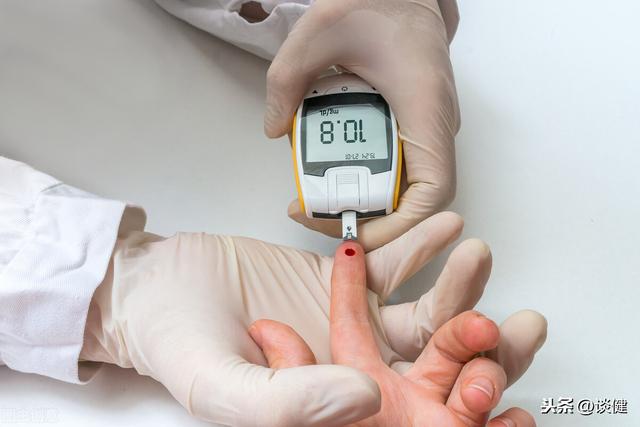
Common Symptoms of Type 2 Diabetes
In reality, many of us are aware of the common symptoms associated with type 2 diabetes. However, because it can take years to make a proper diagnosis. As a result many people are unable to detect slow changes in their health. It is important to be aware of the signs of diabetes, especially if we are at an increased risk of developing type 2 diabetes.
- Thirst and frequent urination: As sugar builds up in the blood, it forces our bodies to try to flush it out by increasing urination.
- Increased hunger:Since our body is unable to absorb sugar properly, it is thought to require more hunger than normal.

- weight loss: Since our bodies are unable to utilize sugar, it is converted into muscle and fat for fuel, which can lead to significant weight loss.
- Easily fatigued:Our bodies are unable to get sugar, which has been your main source of energy, thus making you feel exhausted.
- Blurred vision:High blood sugar can cause vision problems by causing the lens to swell and damaging blood vessels.
- Wounds are slow to heal:High blood sugar can cause your immune system to lose its normal function, making wound healing slower.
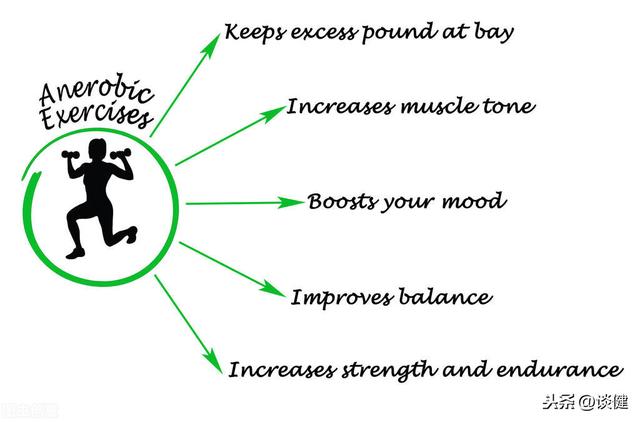
Uncommon Symptoms of Type 2 Diabetes
While many people will experience the classic symptoms that lead to a type 2 diagnosis, some will experience rare and unusual symptoms. Here are some of the less common symptoms, as being vigilant can help us increase our life expectancy.
- dark skin: This condition is known as acanthosis nigricans (AN) and seems to occur mainly in the neck area or other skin fold areas such asAround the armpit or groin area.It is more common in people with darker skin, a result of skin cells multiplying too quickly due to too much insulin in the blood.
- Yeast infections and ringworm:Too much sugar in the blood can lead to an overgrowth of yeast in the genital area, which can lead to fungal infections.
- Itchy, discolored skin:Eruptive xanthomatosis is a disease that occurs in people with poorly managed blood sugar and high triglyceride and cholesterol levels. When blood sugar is chronically elevated, it produces itchy, yellowish bumps on the adnexa and the back of the buttocks.
- Sexual dysfunction:This is most common in men with type 2 diabetes who have high blood sugar. Elevated blood sugar can cause nerve and blood vessel damage, making it difficult to get an erection. Women may also experience sexual problems related to high blood sugar, such as vaginal dryness.
- Dizziness:We usually think that when we feel this way it must be because we are hungry or tired, but it can also be the result of diabetes. Dizziness is usually a sign of hypoglycemia, but prolonged high blood sugar can lead to dehydration, which affects sodium and electrolyte levels, leading to cognitive changes.
- lack of sleep: Type 2 diabetes may cause us to have problems falling asleep. In addition, if we detect high blood sugar, we may get up several times in order to urinate, disrupting our rest.
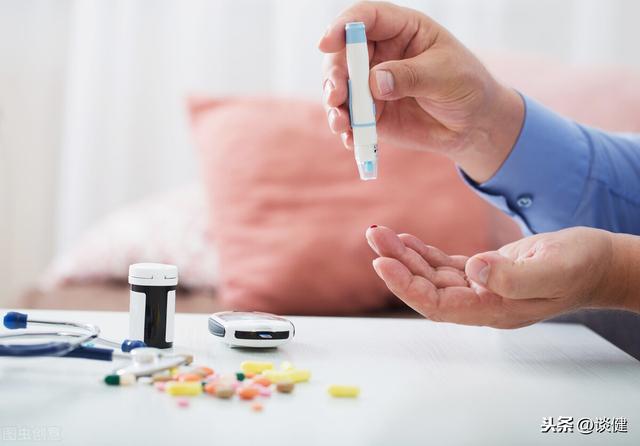
To conclude, although the symptoms of diabetes are so varied that not all of them show up in all patients, knowing the common and uncommon symptoms can help us detect many problems. Thankfully, once a correct diagnosis is given, we can take control of our health and normalize our blood sugar, which will make many of the symptoms disappear. Acting quickly is the key to ensuring no long-term complications.
[Professional doctor to answer your questions
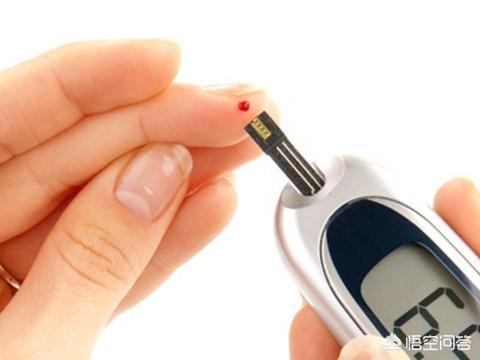
I believe that many people have heard that people who have diabetes will show "three more and one less", that is, eat more, drink more, urinate more, weight loss symptoms, but in fact found that not all diabetic patients will be so, many people do not have any symptom but found diabetes. Why is "three more and one less" called a typical symptom of diabetes? How should this be interpreted?
We have all had the experience of catching a cold, which can be said to come and go, a few hours ago a little headache, chills, sneezing, followed by a non-stop runny nose, rising body temperature, the onset of a very fast, which is caused by bacteria and viruses into the body. Drink plenty of water, rest or take some cold medicine to kill the germs in the body and the cold will be cured.
Diabetes is a disease that occurs when insulin-secreting pancreatic cells are damaged and die, producing less insulin to transport more blood sugar into the cells to be utilized, resulting in a steady rise in blood sugar. This process does not happen in a short period of time, but rather there is a gradual progression that can take years or longer.
Therefore, blood glucose is slowly high, the body will have a certain degree of adaptation to the gradual increase in blood glucose, but also will start the remedial mechanism to combat the effects of elevated blood glucose, so in the early stage of blood glucose elevation often does not show any symptoms, and many people also unintentionally blood glucose measurement found that the blood glucose in fact has been elevated, but just do not know it.
So, when do the "three more and one less symptoms" occur?

Blood glucose is the amount of glucose in the blood, when the blood glucose is elevated to a certain level and the elevated state persists, it will make the blood present also the hypertonic state, so that there is a large osmotic pressure between the blood and the surrounding tissues and cells, and the water in the cells keeps seeping out into the blood, which will send a signal to the brain about the lack of water, so that the patient will feel thirsty and need to drink a lot of water.
In the same way, when the blood passes through the kidneys, a large amount of blood sugar due to osmotic pressure will take away more water into the urine, which leads to an increase in the amount of urine, the higher the blood glucose the more obvious this condition is manifested, which is the reason for polyuria.
Due to the lack of insulin in the body blood sugar is not fully utilized, the tissue cells will be due to lack of energy and constantly to the brain to occur help signal, the brain will send out instructions to eat more to increase blood sugar content to meet the body's needs, the patient will be shown to eat not enough to eat always want to eat the symptoms.
Under normal circumstances, insulin in addition to transporting blood glucose into the cells for use, but also will be excess blood glucose into fat storage in the liver and subcutaneous, when insulin secretion is insufficient to a certain extent, even the transport of blood glucose into the cells can not satisfy the demand, not to mention the conversion of blood glucose for storage, at the same time, the body also had to break down fat to make up for the lack of blood glucose can not be utilized, and so the body weight will gradually drop, and the more thin. So the body weight will gradually drop and become thinner and thinner.

To summarize, the appearance of "three more and one less symptom" often appears only after diabetes has developed to a certain degree, usually after 3-5 years of untreated diabetes, which is also the reason why many patients with "three more and one less symptom" have actually been suffering from diabetes for many years and most of them have already had complications. This is the reason why many patients diagnosed with diabetes with "three more and one less" symptoms have actually been suffering from the disease for many years, and most of them have already had diabetic complications.
Therefore, in order to detect diabetes at an early stage, we can not rely on the symptoms, the only effective way is to monitor blood glucose frequently. And we should pay attention to fasting blood sugar and 2 hours after meal blood sugar should be tested, we should know that these two blood sugar elevation can appear separately, as long as one of the diagnostic criteria for diabetes can be diagnosed as diabetes, and more than half of the people 2 hours after meal blood sugar elevation earlier than the fasting glucose elevation appeared, which must be given great attention.
Finally, learn about the diagnostic criteria for diabetes in the Chinese Guidelines for the Prevention and Control of Diabetes Mellitus:
Fasting blood glucose greater than 7.0 mmol/L or 2-hour postprandial blood glucose greater than 11.1 mmol/L
If this article has helped you, welcome to click on the attention and leave a message, together to learn and exchange more health knowledge.
What are the symptoms of diabetes? Can someone who knows it give a little bit of science?
Diabetes mellitus is a metabolic disease that was recognized at a very early stage, and although there has been a long period of time, many patients, and many disabilities and deaths due to diabetes mellitus, the explanation of the etiology has not progressed much.
The earliest is found in the urine of diabetic patients with sugar, there are many flies, that is a pancreatic problem, insulin is too little resulting in 1902, the world's first synthesis of artificial insulin is the United Kingdom, our country in 1965 synthesized artificial insulin, with artificial insulin, at that time, there are some people believe that diabetes has been conquered. But over the years, diabetes has shown explosive growth, especially in China, where the number of diagnosed patients has reached 140 million, and there are hundreds of millions of people with high blood sugar.
Symptoms of diabetes are manifested by three more than one less, that is, eat more, drink more, urinate more, less means slowly wasting away, sugar metabolism problems, can only be in the blood, no sugar in the cells, the person has no energy, feel hungry, eat more, and to be excreted through the movement, the food burned to produce heat, to drink more to maintain the body temperature, drink more to be urinated out. No sugar in the cells, can only be replaced by protein in the body, over time, protein gradually reduced, people become thin. The key is too little protein, there is no raw material for healing when there is a wound, it can only fester, and too little protein in the kidneys to appear renal dysfunction.
Obese people are prone to diabetes, in fact, obesity is also a metabolic disease, some bad habits and eating habits, leading to metabolic organ damage, obesity and diabetes are at the same time, only people can see when they are fat, and when blood sugar starts to be high people do not know.
As long as you manage your blood sugar smoothly you will be fine and there will be no complications, but many diabetics who manage their blood sugar very well also develop complications. This is because, the blood sugar management mentioned here, are passive, such as the need to take medication to bring down, before taking medication has been high blood sugar, damage to blood vessels and organs. Whereas in people without diabetes, the organs are good and readily metabolize high blood sugar, send it to the cells, and store the excess in the liver or muscles without harming the blood vessels and organs.
Wrong ideas, once formed, are not easy to change, just like back in the day, when the whole world believed that the earth was the center of the universe, and suddenly a madman, Copernicus, said that the sun was the center, attracting nothing but ridicule, abuse, and costing Bruno his life. However, what is right is right, and sooner or later the truth comes out.
This question and answer are from the site users, does not represent the position of the site, such as infringement, please contact the administrator to delete.